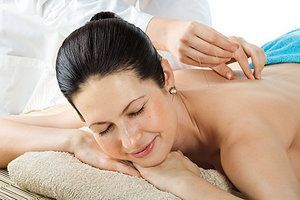In acupuncture medicine, 1958 was bench-marked by an extraordinary development: the discovery of acupuncture anesthesia, one of the most spectacular modern applications of acupuncture and Chinese medicine.
In acupuncture anesthesia, the insertion and manipulation of acupuncture needles replaces anesthetic drugs. Patients are awake and even talking to their surgeons while undergoing major surgical procedures. The first successful instance of acupuncture anesthesia occurred in 1958, in Shanghai No. 1 People's Hospital. Dr. Yin Huizhu performed a tonsillectomy without the use of conventional anesthesia by applying acupuncture to Hegu (LI 4) acupoints. The case was immediately reported in Shanghai's Liberation Daily.1
 This extraordinary discovery was immediately followed by an
observational study with 74 patients participating. A fairly high
success rate was reported and published in the Shanghai Chinese Medicine Journal.2
Subsequently, hospitals all over China rapidly assimilated this
breakthrough procedure. Between 1958 and 1986, more than two million
procedures using acupuncture anesthesia were performed in Chinese
hospitals, including operations on the brain, face, neck, chest, abdomen
and limbs, either without drug-induced anesthesia or with only a small
dose of conventional anesthesia. More than one hundred different
surgical procedures have been conducted using only acupuncture
anesthesia, including significant surgeries such as thyroidectomy,
hysterectomy, heart surgery, and subtotal gastrectomy.3 The
enthusiastic popularization of acupuncture anesthesia in the 1960's led
to widespread total replacement of conventional anesthesia by
acupuncture anesthesia in a variety of surgical operations. China
officially announced acupuncture anesthesia to the world in China's People's Daily in 19714.
During the 1970's, the more rational practice of combining acupuncture
with conventional anesthesia to reduce the overall dosage of anesthetics
became the norm. A quiescent period followed in 1980's, but acupuncture
anesthesia never disappeared from Chinese medical practice. From the
1990's on there has been a resurgence of interest in acupuncture
anesthesia in both research and practice.
This extraordinary discovery was immediately followed by an
observational study with 74 patients participating. A fairly high
success rate was reported and published in the Shanghai Chinese Medicine Journal.2
Subsequently, hospitals all over China rapidly assimilated this
breakthrough procedure. Between 1958 and 1986, more than two million
procedures using acupuncture anesthesia were performed in Chinese
hospitals, including operations on the brain, face, neck, chest, abdomen
and limbs, either without drug-induced anesthesia or with only a small
dose of conventional anesthesia. More than one hundred different
surgical procedures have been conducted using only acupuncture
anesthesia, including significant surgeries such as thyroidectomy,
hysterectomy, heart surgery, and subtotal gastrectomy.3 The
enthusiastic popularization of acupuncture anesthesia in the 1960's led
to widespread total replacement of conventional anesthesia by
acupuncture anesthesia in a variety of surgical operations. China
officially announced acupuncture anesthesia to the world in China's People's Daily in 19714.
During the 1970's, the more rational practice of combining acupuncture
with conventional anesthesia to reduce the overall dosage of anesthetics
became the norm. A quiescent period followed in 1980's, but acupuncture
anesthesia never disappeared from Chinese medical practice. From the
1990's on there has been a resurgence of interest in acupuncture
anesthesia in both research and practice.How does acupuncture anesthesia actually work? Although acupuncture is involved in many aspects of the anesthesia process, the central theme of the mechanism of acupuncture anesthesia is acupuncture analgesia (AA). The analgesic effect is accomplished through the production and regulation of neurotransmitters in the central nervous system. When acupuncture needles are inserted into specific acupuncture points on or under the skin, nerve fibers in the underlying tissues are stimulated. This stimulation sends impulses to the spinal cord, activating the spinal cord, midbrain and hypothalamus-pituitary complex to release neurotransmitters. Incoming pain messages are blocked by the release of neurotransmitters such as enkephalin and dynorphin. The midbrain uses enkephalin to activate the raphe descending system which inhibits spinal cord pain transmission. In the hypothalamus-pituitary center, the pituitary gland releases endorphin into the blood and cerebrospinal fluid to produce an analgesic effect. Nerve cell extensions from the hypothalamus to the midbrain stimulate the midbrain's production of endorphin, which activates the descending analgesia system5.
The discovery and development of acupuncture anesthesia is a remarkable chapter in the ongoing story of Chinese medicine. Scientific research into the effects and applications of acupuncture are now being conducted in countries around the world. Although acupuncture is an ancient treatment modality, it continues to provide a seemingly inexhaustible supply of avenues for exploration.
This article has been published in Acupuncture Today.